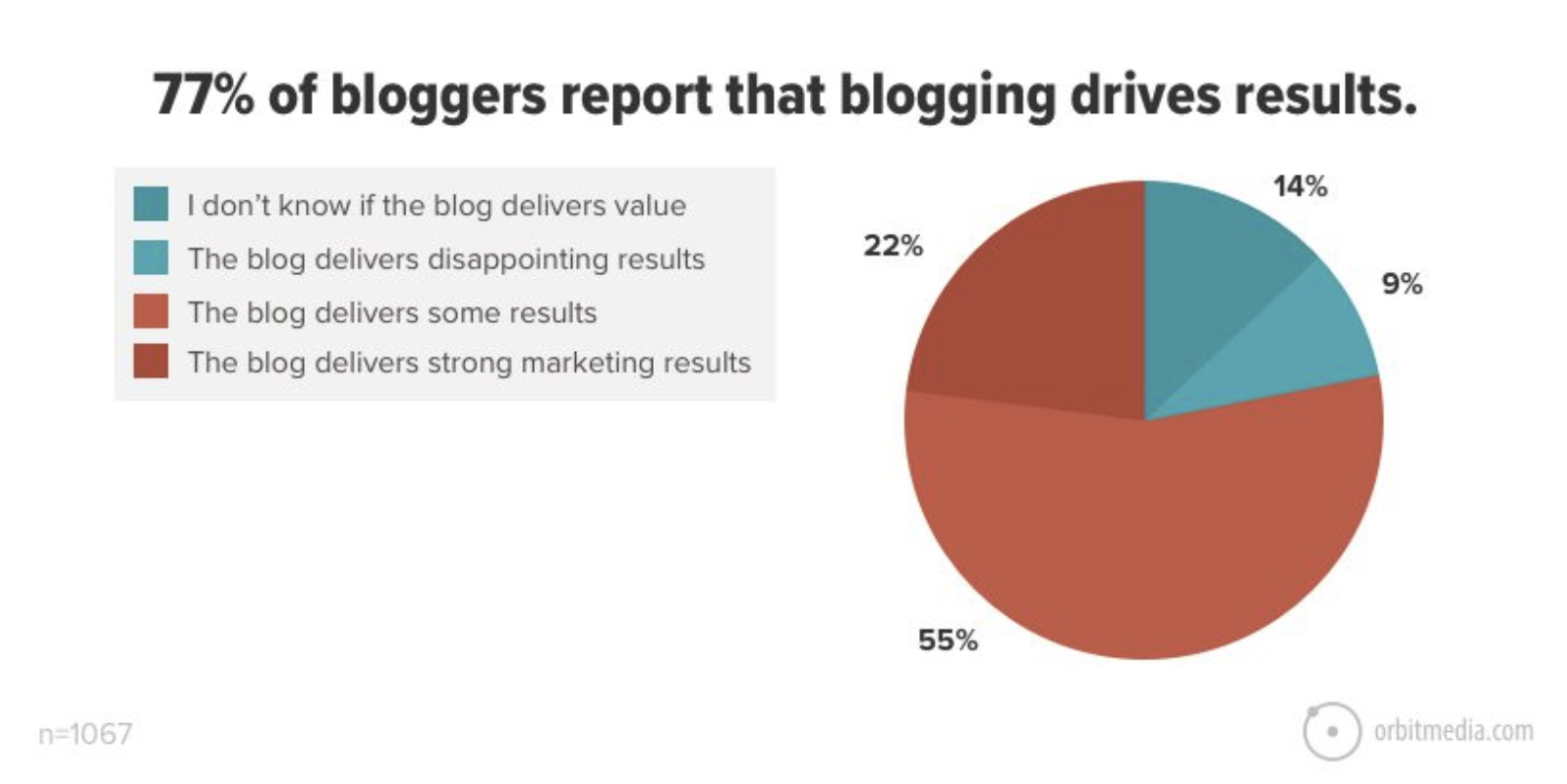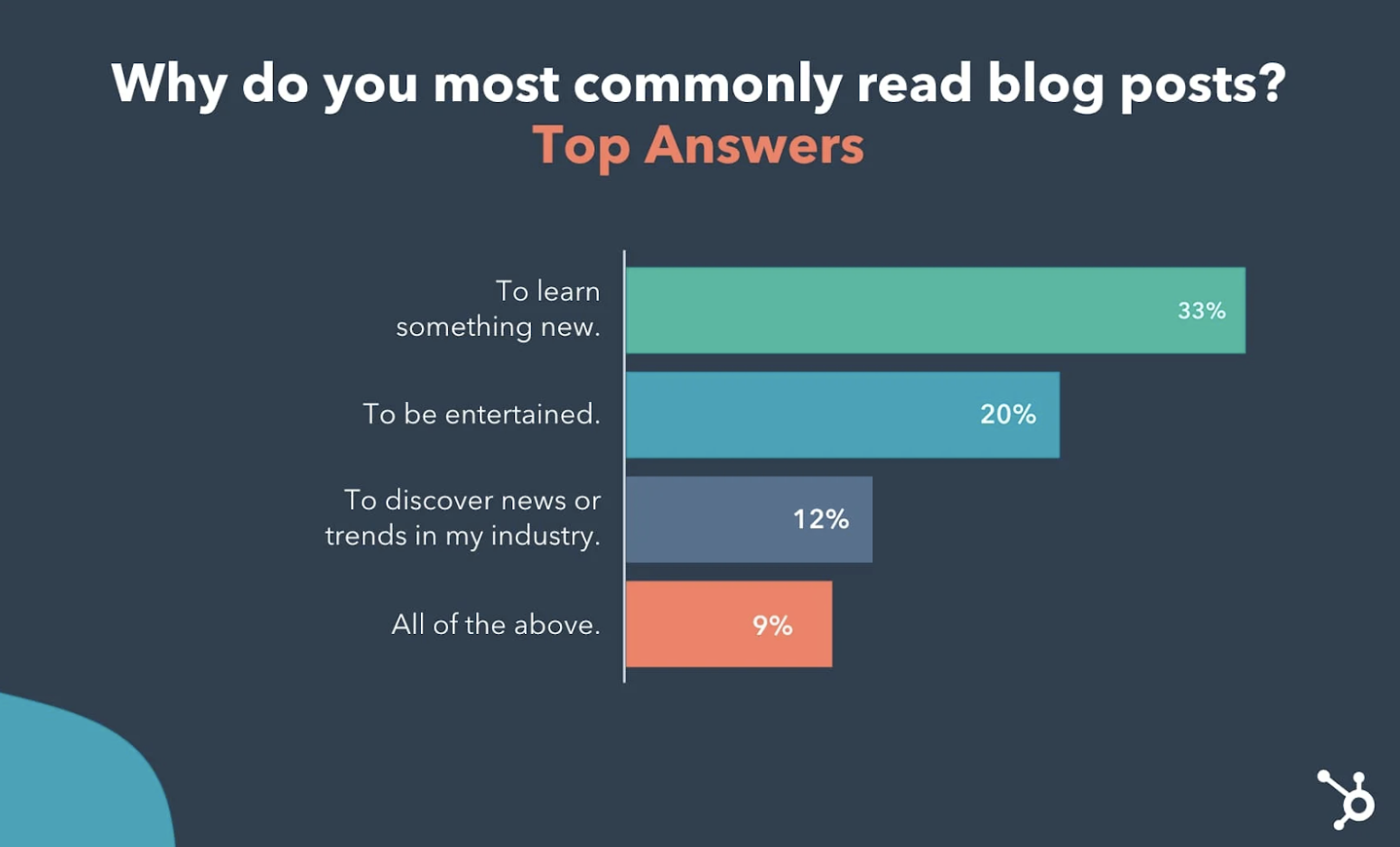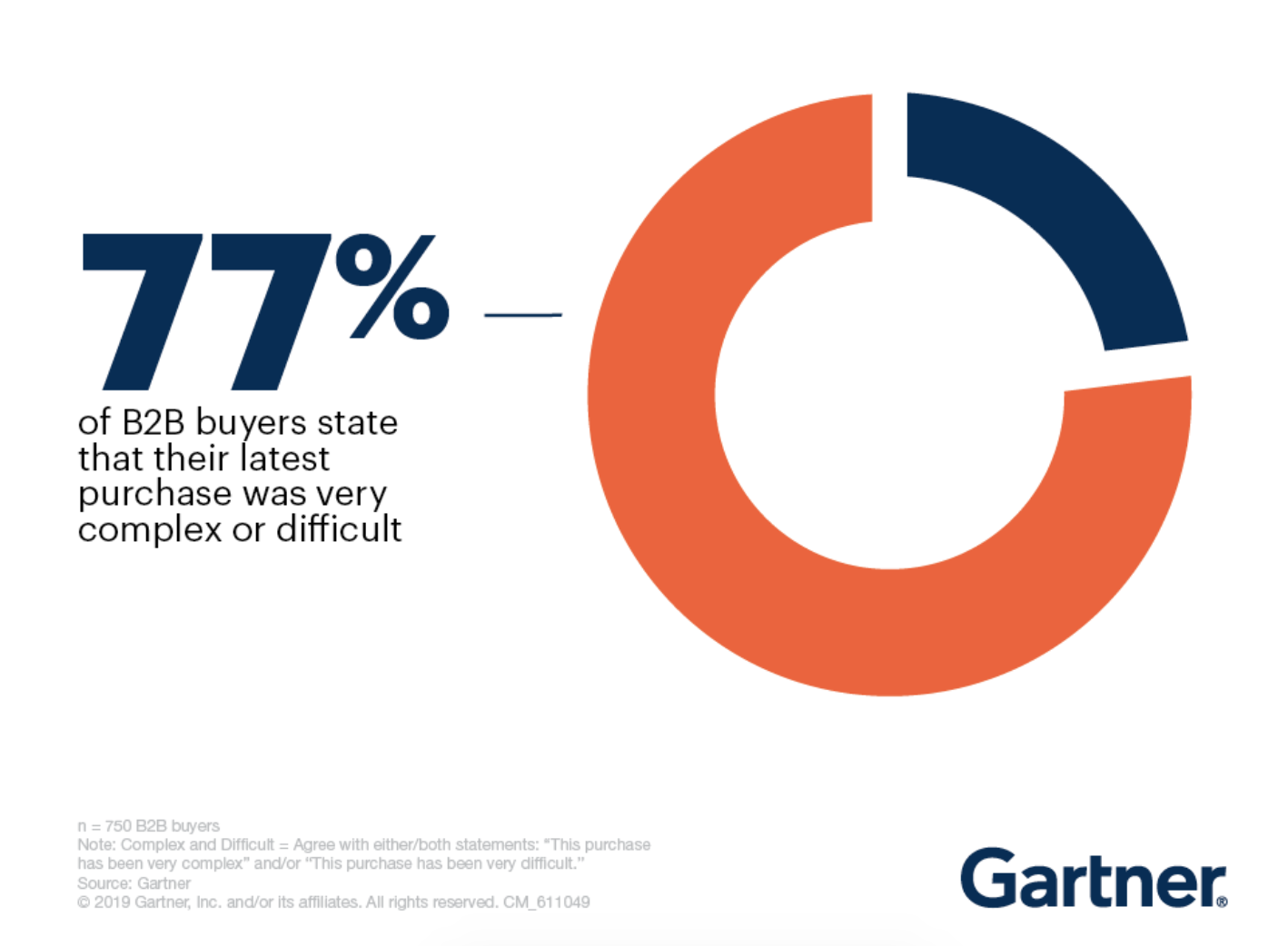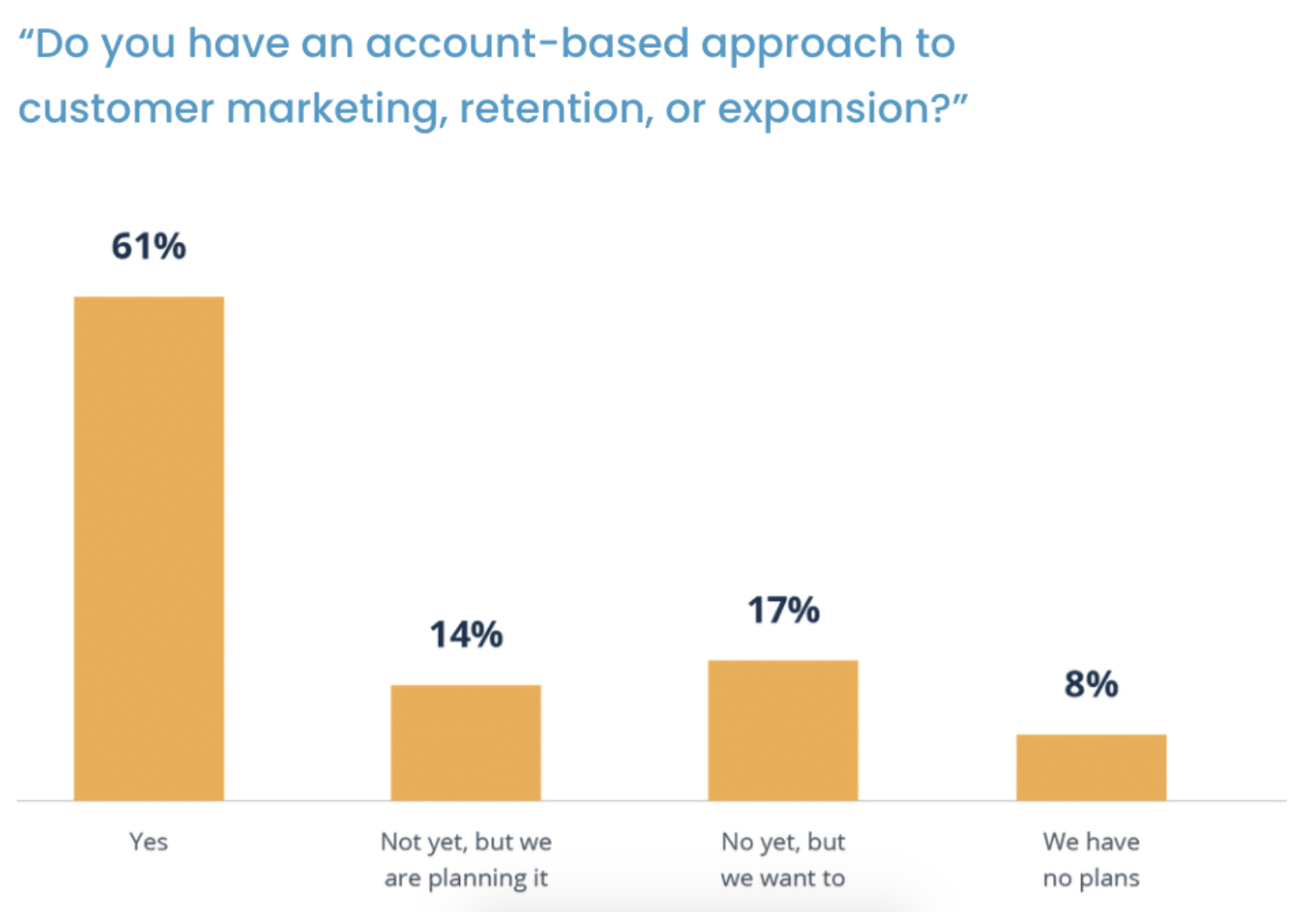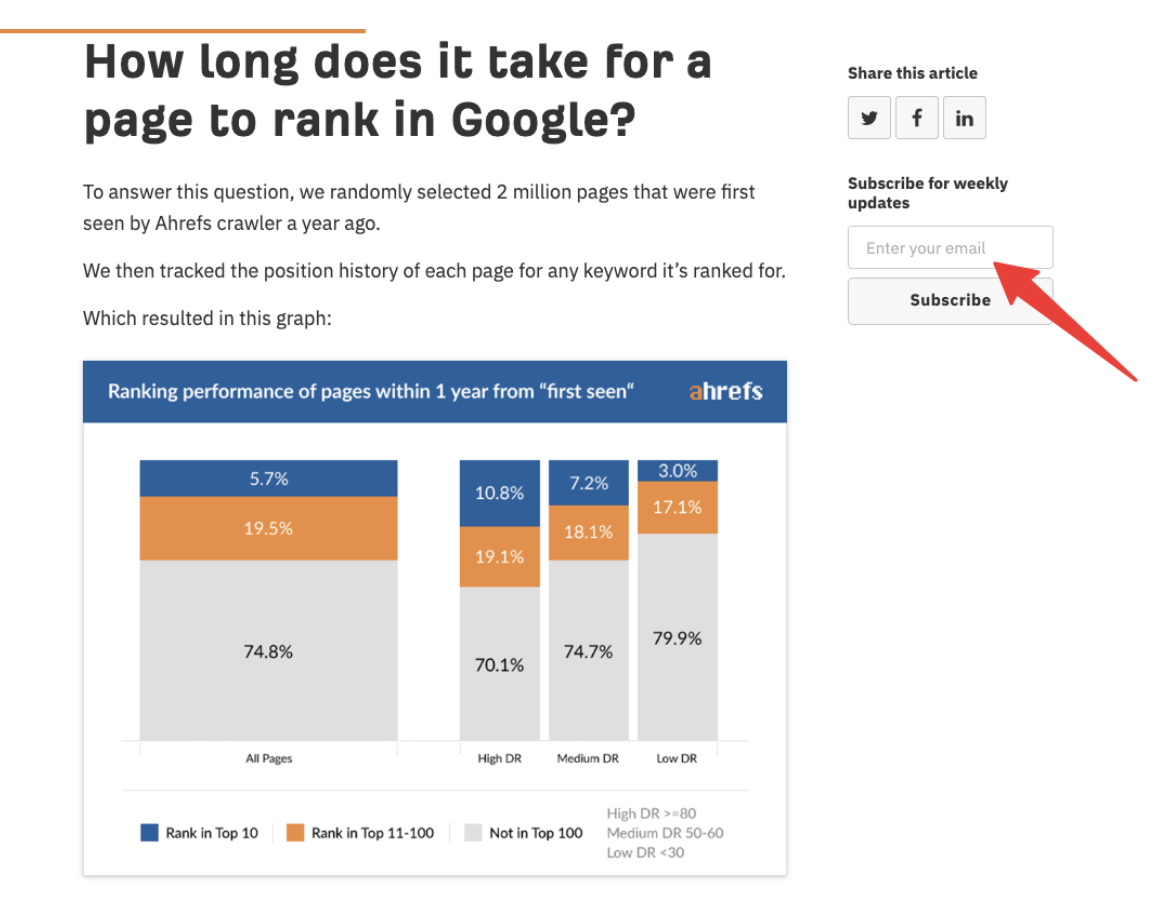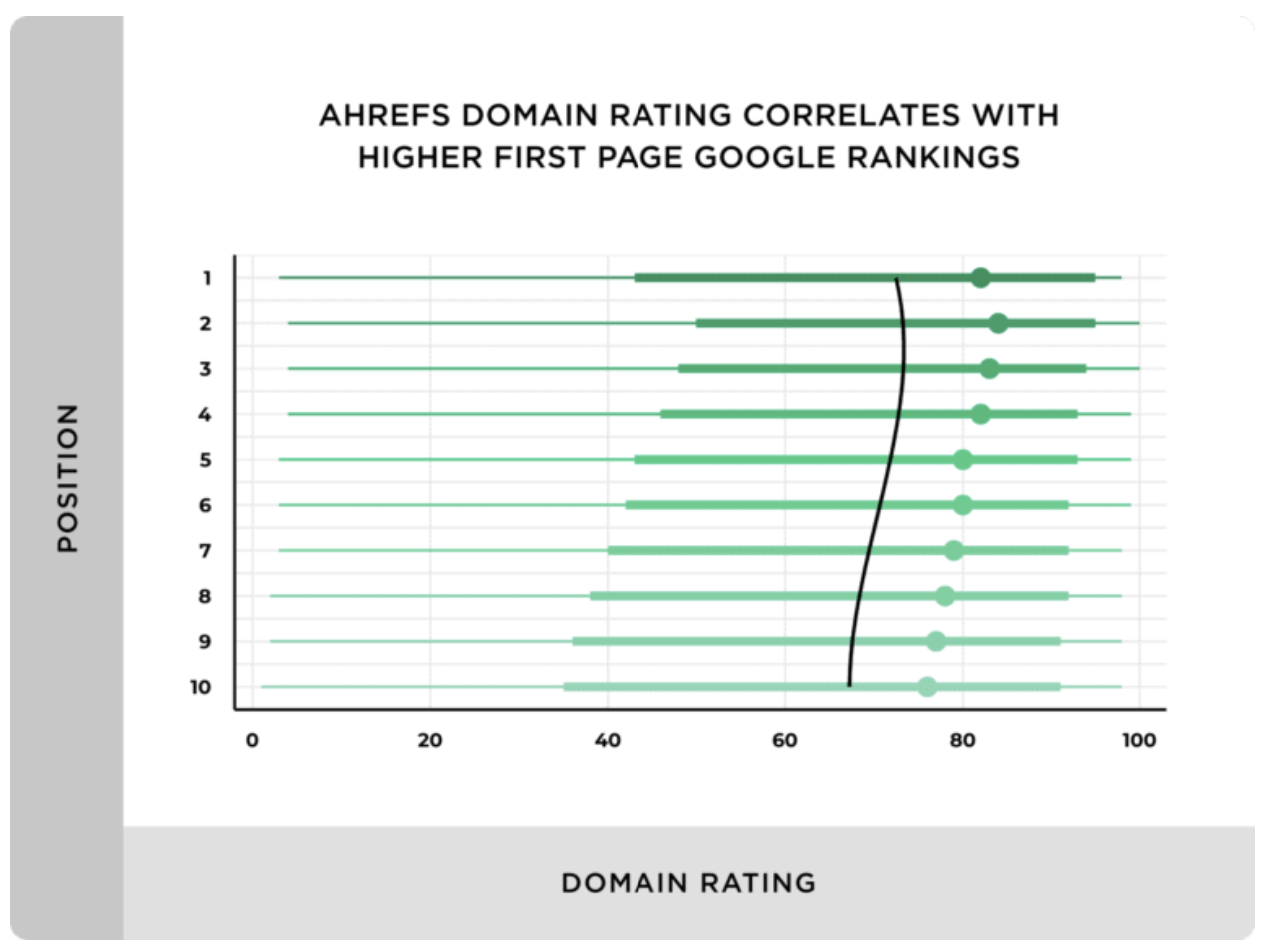Blogging isn’t just a bit of fun; a nice way for your CEO (or more likely your marketing exec) to share whatever’s on their mind.
Executed effectively, blogging has a huge impact on your bottom line.
According to Orbit Media, one in five bloggers agree that their activity drives strong marketing results, while more than three quarters say it delivers at least some results.
But, specifically, what is the purpose of a blog? And how might a business use a blog to support its sales and marketing efforts?
Let’s find out.
What Is the Purpose of a Blog?
The purpose of a blog is to provide content that your audience wants to read, while also aligning with the products or services you sell.
That way, you can generate more traffic to your website, which in turn (hopefully) means more leads and sales. Indeed, 56% of marketers who leverage blogging believe it’s effective, with 10% saying blogs are the content type that produces the highest return on investment.
Blog posts aren’t about providing a totally comprehensive overview of a broad subject — save that for things like pillar pages and white papers.
Instead, each blog post should communicate one idea. If you need to veer off on a tangent, do it in a separate post. And add internal links between the two, because it’s great for SEO.
But all of this leaves us with an important question:
What do audiences actually want to read?
Or, to put it another way, why do people read blog posts in the first place?
Fortunately, research from HubSpot gives us some answers. HubSpot discovered that the number one reason people read blogs is “to learn something new,” while entertainment and discovering industry news and trends also feature high on the list.
Conversely, just 4% of respondents said they read blogs to learn about brands or products.
That’s an important point. Sure, the whole purpose of your sales and marketing campaigns are to make money. But if all you do is write about yourself and how brilliant your product or service is, people aren’t going to pay attention.
How Might a Business Use a Blog?
There are lots of ways businesses can use blog posts to support their sales and marketing strategies.
Some of them are obvious; you can publish blog posts on your website to boost your SEO and share them via your social channels to bring in more traffic.
Other use cases are a little more niche, but nonetheless valuable. We’ve written a whole article on underrated business blogging benefits, but here are some of our favorite “non-traditional” ways for businesses to use a blog:
Support Your Lead Nurturing Efforts
Sales cycles have never been more circuitous.
Surveying more than 250 B2B buyers, Gartner revealed that three-quarters found their most recent purchasing experience was difficult or very complex.
What’s more, a separate Gartner study of 506 tech buyers found that buying teams spend an average of 16.3 months to make a new IT purchase.
This has major ramifications for sales teams.
Rather than racing to close the deal in a single call or meeting, sales reps need to be in it for the long haul, ensuring their company remains at front of mind when the buyer is finally ready to put pen to paper.
Blog content plays a big role in this lead nurturing process.
After all, reps can’t email a lead once a week with a “just checking in” message without appearing spammy. They need to add real value.
Sharing your most recent (or relevant) blog posts with leads can help your brand stay top of mind until they’re ready to purchase.
Pivot to Account-Based Marketing
For companies with long sales cycles and high-ticket products, account-based marketing (ABM) is the natural result of those ever-lengthening sales cycles.
ABM is all about quality over quantity. Rather than trying to close dozens of deals at once, sales and marketing teams put all their effort into nurturing a small number of buyers on an individual level.
It’s a highly intensive process, but it works. Organizations with mature ABM programs say account-based marketing accounts for four-fifths of sales opportunities and three-quarters of total revenue, according to research from Terminus.
So it’s no surprise that uptake of ABM has increased rapidly, with three-fifths of businesses already using it for marketing, retention, or expansion, and a further one-third revealing they have plans or ambitions to do so in the future.
Account-based marketing relies on personalized content. For example, let’s say you’re a marketing automation company. You might create content that discusses the specific benefits and opportunities of automation for your target buyers, highlighting things like:
- The hours a team of their size could save
- The equivalent financial savings
- What they could do with all the extra time and money
Of course, you wouldn’t publish highly personalized content to your blog, because it’s only relevant to a single buyer or organization.
But you can absolutely use your blogs as the foundation for personalized content.
For instance, our imaginary marketing automation company could publish a generic blog discussing the time and cost savings of automation. That post could then be personalized with company-specific information and used to support an ABM program.
Turn Traffic Into Leads
We’ve already mentioned that blogs are an obvious way to generate traffic through organic search and social shares.
But what happens when that traffic arrives on your site?
Clearly, you don’t want visitors to bounce straight back off again, never to return. You want them to take some sort of action.
It’s unlikely they’ll be ready to buy after reading a single blog post (remember, sales cycles are getting longer), but if they loved your post, they might be happy to hand over their name and email address for more of that same quality information.
They won’t do it unless you ask, though.
For that reason, HubSpot always includes a call-to-action to a lead magnet at the end of their blog posts:
In a similar vein, Ahrefs adds a floating newsletter signup form to the sidebar of their blogs:
It’s a simple and effective way to turn anonymous blog readers into leads.
Increase Your Domain Authority
There are multiple SEO benefits of blogging.
Most obviously, blogging gives you an opportunity to target more keywords.
Beyond that, blogging also helps you increase your website’s authority. That’s important, because analysis from Backlinko revealed that authority strongly correlates with improved rankings.
How does blogging contribute to the authority of your site?
It’s all about backlinks.
When authoritative websites link to your content, that sends a signal to search engines that you really know your stuff, so they’ll rank it higher.
And the more high-quality content you produce, the more scope you have to acquire backlinks.
Using KPIs to Maintain a Results-Focused Blog
If you’re going to use blogs in your sales and marketing campaigns, you want to ensure that you’re generating a strong return on investment.
That means tracking the performance of your content against key blogging KPIs like:
- Total blog traffic. Simply put, how much traffic did your blog posts generate in a given period of time? Also, look at which posts drove those visits. Does the bulk of your traffic come from posts on a certain theme? Consider writing more about that topic!
- Traffic by source. Where does all your blog traffic come from? Organic search? Social media? Referrals? Not only does this show you where you’re currently “winning,” but it also helps you find underutilized channels that could drive future growth.
- New backlinks acquired. As we’ve already noted, backlinks build domain authority, which means higher rankings. So you definitely want to track how many links your blog posts are generating over time.
- Engagement metrics. KPIs like average time on page and average pages per visit help you understand whether people are digging deep into your content and clicking around your website, or landing on a post and bouncing straight off again.
- Email subscribers. An email newsletter is a fantastic tool for nurturing leads, so it makes sense to track the growth of your email list.
These days, every business knows they should have a blog. But not all businesses know what to do with one.
If you hone in on your blog’s purpose and leverage its power, you’ll be able to create content that aligns with your sales and marketing goals – plus keeps readers coming back for more.
Want to start leveraging blogs in your sales and marketing campaigns? Lack the resources to do it all yourself? We’d love to help! Get in touch with Content Conquered today 🙂

